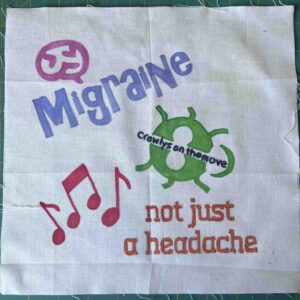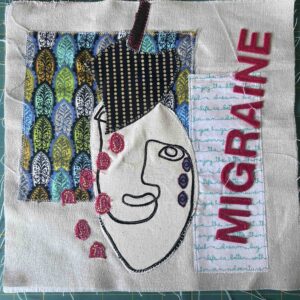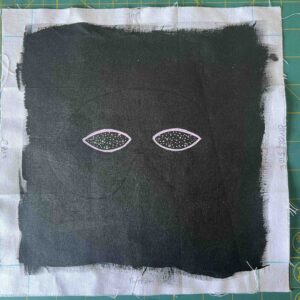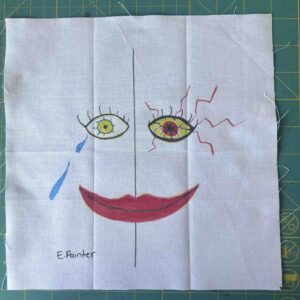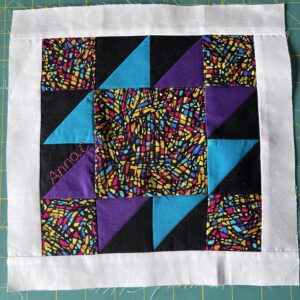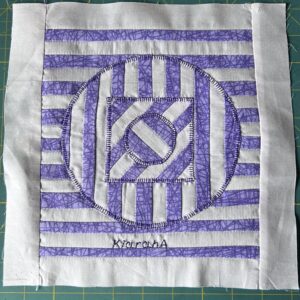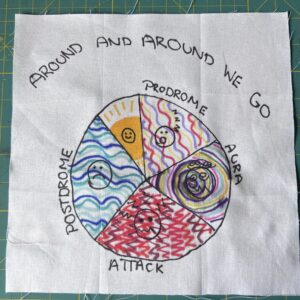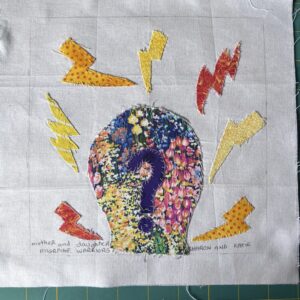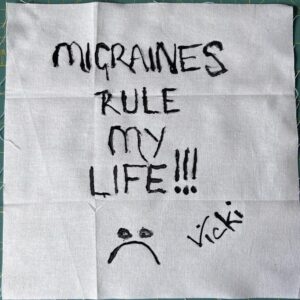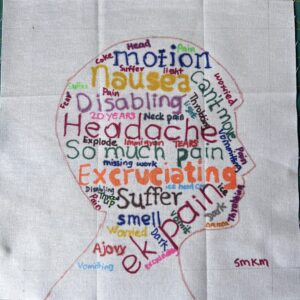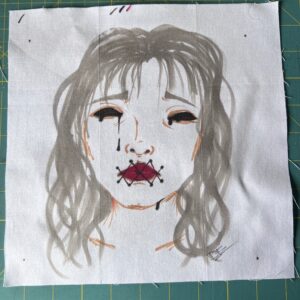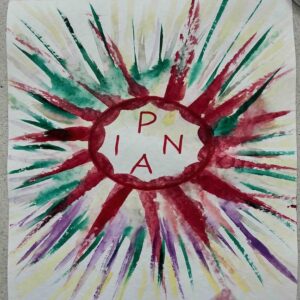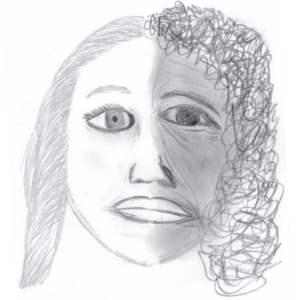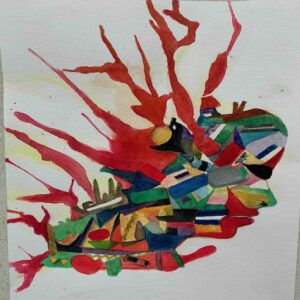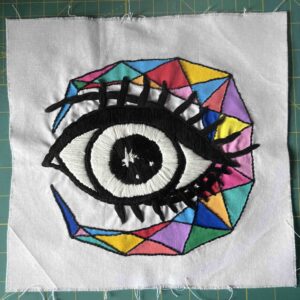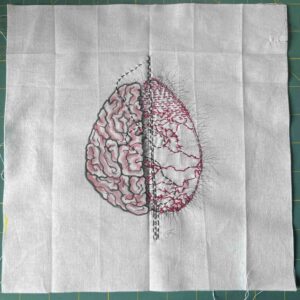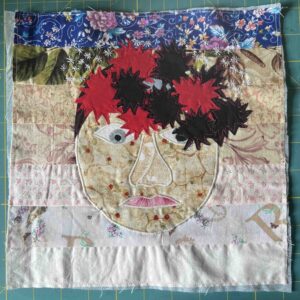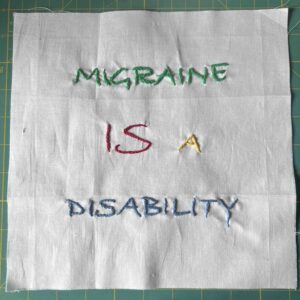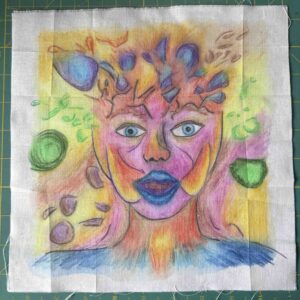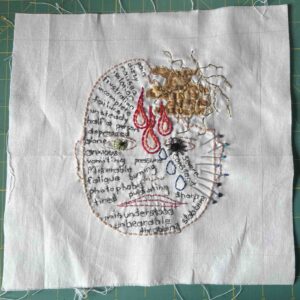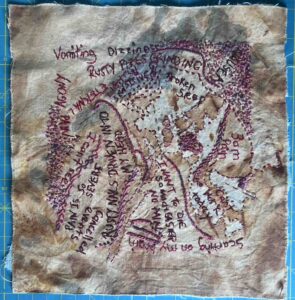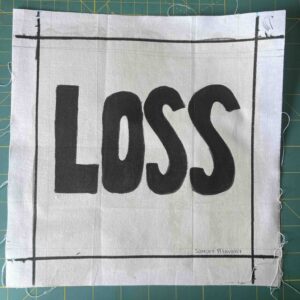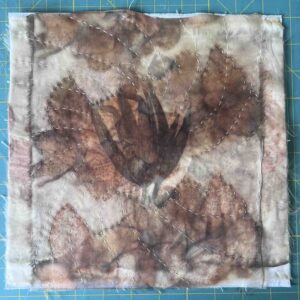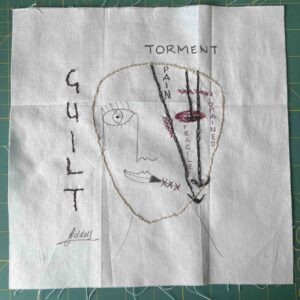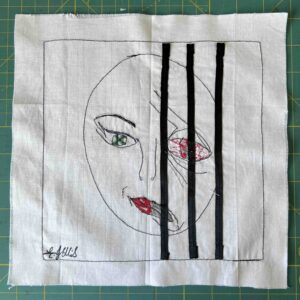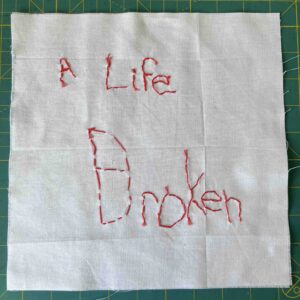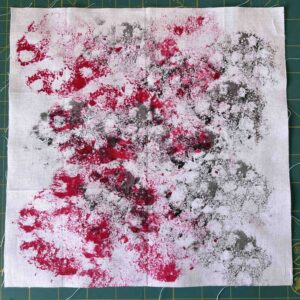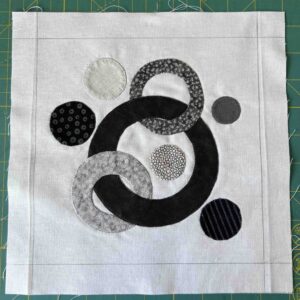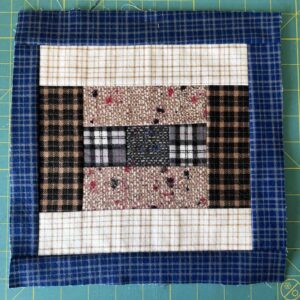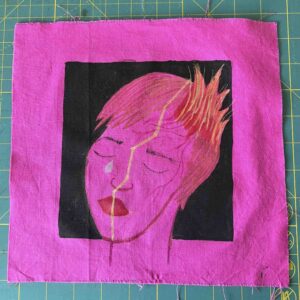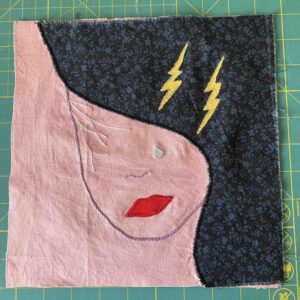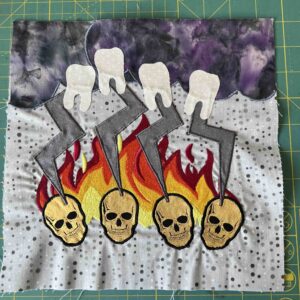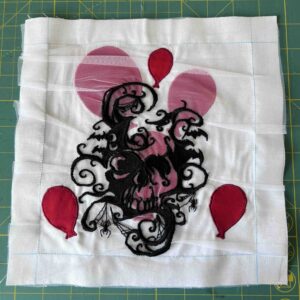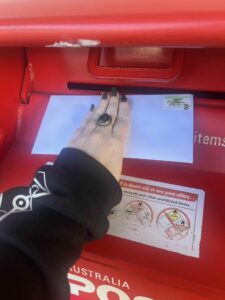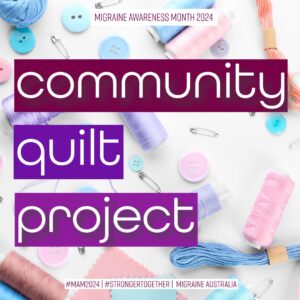One of the things that I’ve found over the years doing UFO challenges that is important to making sure that I’m organised, is storage of my projects. It keeps the whole project together, especially if you’ve got lots of pieces of fabric, a pattern, specific gadgets and tools, matching threads and any embellishments. Everything is on hand when you pull the project when I draw the month’s number. I also like to leave myself a note in with the project as to where I was up to, just so I can dive back into the project without spending half a day sorting through bits to figure it out all over again.
Previously I tried the whole ziplock bag thing but they are slippery little suckers and honestly not big enough to store the project and all the accessories and other bits needed. It’s not my favourite way to store items but it does work for some things.
So for the projects on my second list I am using the green tubs I bought years ago. I have 12 of them in total so I’ll just need 10 and one project per tub. I don’t label them as I rotate projects through these tubs so I don’t want anything permanent on them. They stack under my desk and cutting bench and are easily accessible. Any project that won’t fit in one of these tubs can use the 2 leftover tubs as overflow or wherever the project is currently sitting – for example my re-upholstery job is a chair and it’s in my craft room. Sort of in the road but it is what it is.
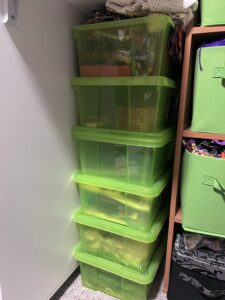
Projects on my first list are all quilt tops. These have been hanging up in my quilting studio on a curtain rod, using trouser hangs – you know the clippy ones – so that the quilts and their backings stay nice and wrinkle free. This is a great way to store quilt tops and backing if you have the space. If I had a hanging space in a wardrobe I would have used that space but I like MacGyvering things and I had a spare curtain rod.
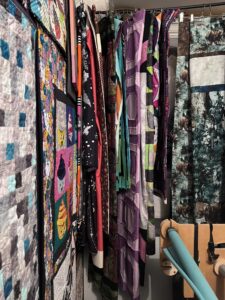
Storage is one of those things I find to be a personal preference thing. Like buying a wallet or something that you want to have really specific settings or a layout. I know everyone’s sewing space is wildly different and we require different setups in order to function. I personally like a room that kind of looks like chaos – it fuels my inspiration having all that colour and texture around me, all my little collectibles and things that I love. But storage in general is a stressor. It never what it needs to be, the right size or shape or its been built in somewhere that’s not practical (I’m looking at you built-in wardrobes with no shelves). I also have found over the years in all the houses I’ve lived in that rentals never have practical storage. And I know this is a slight tangent – not speaking about craft specific storage here – but it seems to be across the board no matter what you are trying to store.
I’ve definitely been guilty of buying storage when I don’t need it. But I have gotten better over the years and now I’m in a decluttering phase. Trying to stop the over consumerism, use what I have and streamline things in my living spaces.
This challenge is an attempt to male inroads on that streamlining. I want to clear the decks of “stuff”.
So, what kinds of storage are you using for this challenge? Feel free to share as maybe your storage ideas will help someone else decide what they want to do.
Remember, I’ll be sharing each month’s numbers across my socials so you can participate from any source but if you would like to join the FB group that is where most of the discussion will be happening.
FB Group: facebook.com/groups/1401125050180861
Facebook: https://www.facebook.com/frankiesfabrics
Instagram: https://instagram.com/frankiesfabrics/
Threads: https://www.threads.net/@frankiesfabrics
